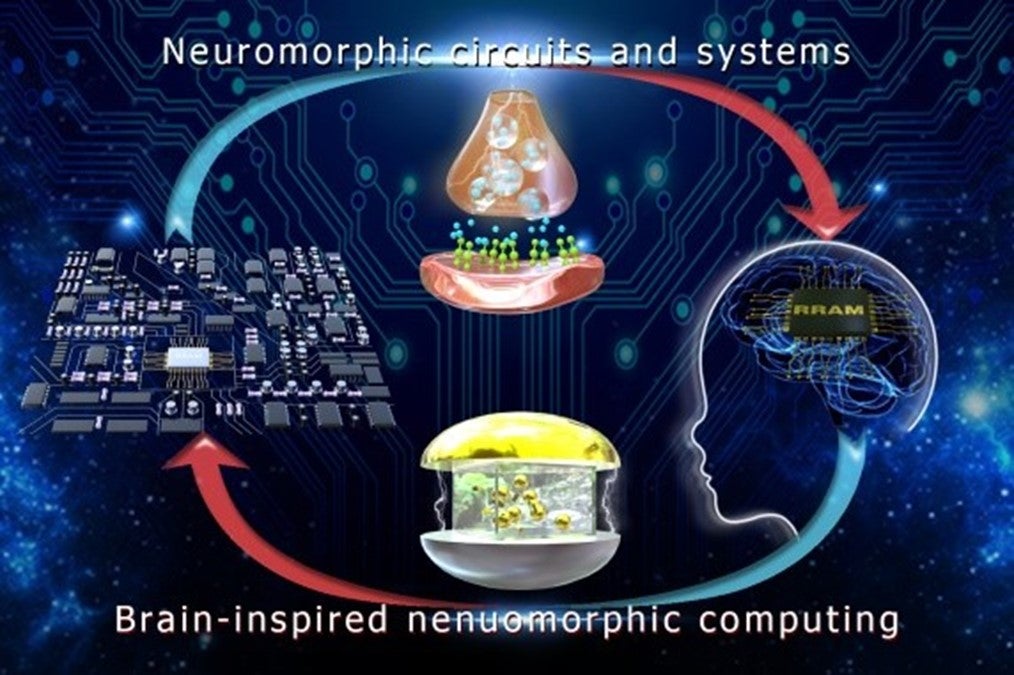Currently, 5% to 15% of the world’s energy is spent in data manipulation, transmission, or processing. For future artificial intelligence and big data analysis by machine learning, it needs a low power device with high power efficiency. The human brain is a million times more energy-efficient than conventional CMOS computing.

Neuromorphic computing is a new type of computing architecture to mimic the function of the human brain. The goal of our research is to develop novel electronic and photonic materials and devices for energy-efficient neuromorphic computing and invent processes and technologies to fabricate such devices and circuits.
Representative computing publications:
- 1. Guo, Tao, Kangqiang Pan, Yixuan Jiao, Bai Sun, Cheng Du, Joel P. Mills, Zuolong Chen et al. "Versatile memristor for memory and neuromorphic computing." Nanoscale Horizons 7, no. 3 (2022): 299-310.
- 2. Guo, Tao, Jiawei Ge, Bai Sun, Kangqiang Pan, Zhao Pan, Lan Wei, Yong Yan, Y. Norman Zhou, and Yimin A. Wu. "Soft Biomaterials Based Flexible Artificial Synapse for Neuromorphic Computing." Advanced Electronic Materials (2022): 2200449.
- 3. Sun, Bai, Tao Guo, Guangdong Zhou, Shubham Ranjan, Yixuan Jiao, Lan Wei, Y. Norman Zhou, and Yimin A. Wu. "Synaptic devices based neuromorphic computing applications in artificial intelligence." Materials Today Physics 18 (2021): 100393.

These examples are only several of our projects. There are many more types of opportunities and case studies. If you'd like to discuss partnering or sponsoring a research project in Materials Interface or would like more details: